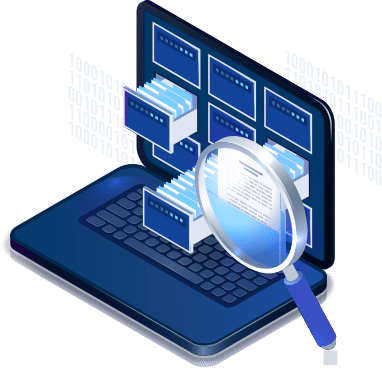According to an IDC study, 30-50% of organizations encounter a gap between their data expectations and reality. A deeper look at this statistic shows that:
- 45% of organizations see a gap in data lineage and content,
- 43% of organizations see a gap in data completeness and consistency,
- 41% of organizations see a gap in data timeliness,
- 31% of organizations see a gap in data discovery, and
- 30% of organizations see a gap in data accountability and trust.
These data dimensions are commonly termed as data quality metrics – something that helps us to measure the fitness of data for its intended purpose – also known as data quality.
What is data quality?
The degree to which data satisfies the requirements of its intended purpose.
If an organization is unable to use the data for the reason it is stored and managed for, then it’s said to be of poor quality. This definition implies that data quality is subjective and it means something different for every organization, depending on how they intend to use it. For example, in some cases, data accuracy is more important than data completeness, while in other cases, the opposite may be true.
Another interesting way of describing data quality is:
The absence of intolerable defects in a dataset.
Meaning, data cannot be completely free of defects and that is fine. It just has to be free of defects that are intolerable for the purpose it is used across the organization. Usually, data quality is monitored to see that the datasets contain the needed information (in terms of attributes and entities), and that information is as accurate (or defect-free) as possible.
How to build a case for data quality?
Having delivered data solutions to Fortune 500 clients for over a decade, we usually find data professionals spending more than 50 hours a week on their job responsibilities. The added hours are a result of duplicate work, unsuccessful results, and lack of data knowledge. On further analysis, we often find data quality to be the main culprit behind most of these data issues. The absence of a centralized data quality engine that consistently validates and fixes data quality problems is costing experienced data professionals more time and effort than necessary.
When something silently eats away at your team productivity and produces unreliable results, it becomes crucial to bring it to the attention of necessary stakeholders so that corrective measures can be taken in time. These measures should also be integrated as part of the business process so that they can be exercised as a habit and not just a one-time act.
In this blog, we will cover three important points:
- The quickest and easiest way to prove the importance of data quality.
- A bunch of helpful resources that discuss different aspects of data quality.
- How data quality benefits the six main pillars of an organization.
Let’s get started.
1. Design data flaw – business risk matrix
To prove the importance of data quality, you need to highlight how data quality problems increase business risks and impact business efficiency. This requires some research and discussion amongst data leaders and professionals, and then they can share the results and outcomes with necessary stakeholders.
We oftentimes encounter minor and major issues in our datasets, but we rarely evaluate them deep enough to see the kind of business impact they can have. In a recent blog, I talked about designing the data flaw – business risk matrix: a template that helps you to relate data flaws to business impact and resulting costs. In a nutshell, this template helps you to relate different types of misinformation present in your dataset to business risks.
Example
For example, a misspelled customer name or incorrect contact information can lead to duplicate records in a dataset for the same customer. This, in turn, increases the number of inbound calls, decreases customer satisfaction, as well as impacts audit demand. These mishaps take a toll on a business in terms of increased staff time, reduced orders due to customer dissatisfaction, and increased cash flow volatility, etc.
But if you can get this information on paper where something as small as a misspelled customer name is attributed to something as big as losing customers, it can prove to be the first step in building a case about the importance of data quality.
2. Utilize helpful data quality resources
We have a bunch of content on our data quality hub that discusses data quality from different angles and perspectives. You will probably find something there that fulfils your requirements – something that helps you to convince your team or managers about the importance and role of data quality for any data-driven initiative.
A list of such resources is given below:
- The impact of poor data quality: Risks, challenges, and solutions
- Data quality measurement: When should you worry?
- Building a data quality team: Roles and responsibilities to consider
- 8 best practices to ensure data quality at enterprise-level
- Data quality dimensions – 10 metrics you should be measuring
- 5 data quality processes to know before designing a DQM framework
- Designing a framework for data quality management
- The definitive buyer’s guide to data quality tools
- The definitive guide to data matching
3. Present the benefits of data quality across main pillars
In this section, we will see how end-to-end data quality testing and fixing can benefit you across the six main pillars of an organization (business, finance, customer, competition, team, and technology).
a. Business
A business uses its data as a fuel across all departments and functions. Not being able to trust the authenticity and accuracy of your data can be one of the biggest disasters in any data initiative. Although all business areas benefit from good data quality, the core ones include:
i. Decision making
Instead of relying on intuitions and guesses, organizations use business intelligence and analytics results to make concrete decisions. Whether these decisions are being made at an individual or a corporate level, data is utilized throughout the company to find patterns in past information so that accurate inferences can be made for the future. Lack of quality data can definitely skew the results of your analysis, leading this approach to do more harm than good.
Read more at Improving analytics and business intelligence with clean data.
ii. Operations
Various departments such as sales, marketing, and product depend on data for effective operation of business processes. Whether you are putting product information on your website, using prospect lists in marketing campaigns, or using sales data to calculate yearly revenue, data is part of every small and big operation. Hence, good quality data can boost operational efficiency of your business, while ensuring results accuracy and reducing gaps for potential errors.
Read more at Key components that should be part of operational efficiency goals.
iii. Compliance
Data compliance standards (such as GDPR, HIPAA, and CCPA, etc.) are compelling businesses to revisit and revise their data management strategies. Under these data compliance standards, companies are obliged to protect the personal data of their customers and ensure that data owners (the customers themselves) have the right to access, change, or erase their data.
Apart from these rights granted to data owners, the standards also hold companies responsible for following the principles of transparency, purpose limitation, data minimization, accuracy, storage limitation, security, and accountability. Timely implementation of such principles becomes way easier with clean and reliable data quality. Hence, quality data can help you conform to integral compliance standards.
Read more at The importance of data cleansing and matching for data compliance.
b. Finances
A company’s finances include an abundance of customer, employee, and vendor information, as well as the history of all transactions that happened with these entities. Bank records, invoices, credit cards, bank sheets, customer information are confidential data that do not have room for errors. For this reason, consistent, accurate, and available data help ensure that:
- Timely payments are made whenever due,
- Cases of underpay and overpay are avoided,
- Transactions to incorrect recipients are avoided,
- The chances of fraud are reduced due to duplicate entity records, and so on.
Read more at The impact of data matching on the world of finance.
c. Customer
In this era, customers seek personalization. The only way to convince them to buy from you and not a competitor is to offer them an experience that is special to them. Make them feel they are seen, heard, and understood. To achieve this, businesses use a ton of customer-generated data to understand their behavior and preferences. If this data has serious defects, you will obviously end up inferring wrong details about your customers or potential buyers. This can lead to reduced customer satisfaction and brand loyalty.
On the other hand, having quality data increases the probability of discovering relevant buyers or leads – someone who is interested in doing business with you. While allowing poor quality data in your datasets can add noise and make you lose sight of potential leads out there in the market.
Read more at Your complete guide to a obtaining a 360 customer view.
d. Competition
Good data quality can help you to identify potential opportunities in the market for cross-selling and upselling. Similarly, accurate market data and understanding can help you effectively strategize your brand and product according to market needs.
If your competition leverages quality data to infer trends about market growth and consumer behavior, they will definitely leave you behind and convert potential customers more quickly and timely. On the other hand, if wrong or incorrect data is used for such analysis, your business can be misled into making inaccurate decisions – costing you a lot of time, money, and resources.
Read more at How you can leverage your data as a competitive advantage?
e. Team
Managing data and its quality is the core responsibility of the data team, but almost everyone reaps the benefits of clean and accurate data. With good quality data, your team doesn’t have to spend time correcting data quality issues every time before they can use it in their routine tasks. Since people do not waste time on rework due to errors and gaps present in datasets, this has a positive impact on the team’s productivity and efficiency; and they can focus their efforts on the task at hand.
Read more at Building a data quality team: Roles and responsibilities to consider.
f. Technology
Data quality can be a deal-breaker while digitizing any aspect of your organization through technology. It is quite easy to digitize a process when the data involved is structured, organized, and meaningful. On the other hand, bad or poor data quality can be the biggest roadblock in process automation and technology adoption in most companies.
Whether you are employing a new CRM, business intelligence, or automating marketing campaigns, you won’t get the expected results if the data contains errors and is not standardized. To get the most out of your web applications or designed databases, the content of the data must conform to acceptable data quality standards.
Read more at The definitive buyer’s guide to data quality tools.
Conclusion
And there you have it – we went through a whole lot of information that can help you build a case for data quality in front of stakeholders or line managers. This piece is definitely a bit different in how the benefits of data quality were presented. The reason for this is, instead of highlighting six or ten areas that can be improved with quality data – I wanted to bring our attention to a more crucial point: Data quality impacts the main pillars of your business in too many different dimensions.
Business leaders need to realize that having and using data is not even half the game. The ability to trust and rely on that data to produce consistent and accurate results is the main concern now. For this reason, companies often adopt stand-alone data quality tools for cleaning and standardizing their datasets so that it can be trusted and used whenever and wherever needed.










































